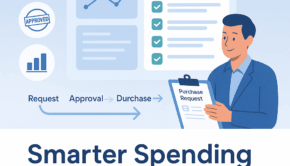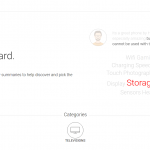Jonathon Karelse, others on why smarter analytics key to successful sales promotions
Two marketing strategies that are critical to marketers are sales promotions and advertising, but distinguishing between them is important in order to build sales and increase customer satisfaction with your brand, product or service.
Each appeals to consumers in different ways.
Advertising creates an emotional connection as a way to sway purchasing decisions and relies heavily on images, words, sounds or experiences to that end. Sales promotions, though, are based on reason and appeal to a customer’s sense of logic. An example would be a buy-one-and-get-one-free offer.
What can make promotions particularly attractive to brands is their measurability, particularly versus the intangibility of advertising.
But promotion campaigns still can be a challenge to measure their impact, particularly in today’s complex and dynamic sales environment, says Jonathan Karelse, a partner with consultancy NorthFind Partners, a change management specialist with expertise in data-driven analytics, forecasting and planning. “It’s not easily addressed with standard business intelligence and analytics software,” he adds.
So what does it take to build successful sales promotions? Consider some of the most important elements.
It’s All about Audience Targeting: Because one size doesn’t fit all, you need to tailor your strategy. Who are you targeting and why? Carefully define the audience you’re after and how your promotion will shift this change.
Shama Hyder of the Marketing Zen Group tells that it starts with identifying what problem your product or service solves, and who has the problem. It may lead to a large target group audience or divided groups with similar interests. If it’s the latter, your promotion needs to be tailored further within each segment to resonate with each more intimately.
Quantify Promotional Impact: In our high-tech world, it’s easy to source data to help quantify the impact of our sales. And businesses increasingly need to do so by more accurately reading their sales data, in part through regression techniques. Regression is a form of statistical modeling, Jonathon Karelse explains, that requires a cross section of data preparation and analytical techniques. It’s a way of mathematically sorting out which dependent and independent variables have an impact on the campaign’s success, addressing which factors matter most, which interact most and how certain you can be about your findings.
Make a Plan of Attack: A well laid-out incentive will inspire customers to take action. Generally, incentives fall into three categories: price savings that include coupons, discounts and other value-added items, samples or trial offers and events that elicit excitement about a product or service.
Figure out the Dollars and Cents: A promo that offers free flights in an air force jet sounds great but what will your bottom line be? This promotion may not make financial sense to you if you have a Moving Company. Set goals and have a good idea of what the promotion will cost. This allows you to create a promotion budget and allocate staff time. More importantly, it lets you see if the cost of the promotion is worth the net results in increased sales.
Place Time Limits on Your Promo: It’s human nature to assign more value to something that seems limited. FOMO (fear of missing out) is a keenly felt human emotion that well serves promotion deals that are available for a limited time.
Promote Your Promotion: For your offer to be successful the buying public needs to learn about it, so the question is: how do you promote your promo?
The answer is you promote it like you would any other products or services. Social media, company websites, email, newsletters, media releases, articles in local, regional and national newspapers and magazines, broadcast media such as television and radio, podcasts, flyers, signage and word-of-mouth are all effective ways to get the word out about your offering.
What’s critical, however, is to use your audience targeting as a guide for your outreach strategies. Moreover, as Yusef Bhana of TranslateMedia tells CIO, your channels must be weighed for their strengths and weaknesses and how well they will help you achieve your sales goals. It’s better to be in a few, more effective channels than to spread your resources thinly (and less effectively) over many.
















